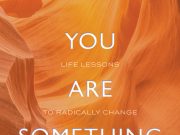The sun sets earlier and rises later each day. Warm summer nights turn into chilly mornings. It becomes difficult to get out of bed. A general lack of motivation and fatigue plague you. Frustration sets in.
You may have noticed a higher level of irritability. Sigh. It is dark when you go to bed and dark when you come home in the evening. There doesn’t seem to be enough time in the day.
Perhaps it is your diet? As you turn to comfort foods like chocolate, pot pie, and pop tarts, your energy level dwindles.
I’ve been there. My body feels heavier than usual as if my arms and legs are weighted. I know I have a list to accomplish and a desire to achieve the goals set, but my body tells me differently. I am more easily tearful, sensitive, yet edgy. The dishes sit longer, and laundry is piled to the ceiling.
Seasonal Affective Disorder (SAD) is a type of depression related to the change in seasons, specifically the seasonal variations of light.
It begins and ends at the same time each year, spanning from September through April. The peak of the depressive symptoms is experienced in December, January, and February. It affects more than 3 million people in the United States each year.
According to Mental Health America:
- Three out of four SAD sufferers are women.
- The main age of onset of SAD is between 18 and 30 years of age.
The severity of SAD depends both on a person’s vulnerability to the disorder and his or her geographical location.
Do you think you may suffer from SAD? Here are the symptoms:
- Depression
- Anxiety
- Sleep disturbances
- Irritability
- Isolation
- Tiredness
- Overeating
- Loss of libido or less desire for physical contact
- Mood changes
If you had most of these symptoms for three or more seasonal years, you may suffer from SAD. It is a unique form of depression, but what causes it?
- The change in the variations of light can cause a person’s internal clock to be out of step. In turn, the moods shift.
- Melatonin is a hormone produced in the penial gland. The increase in darkness causes the increase of this hormone. This will also cause a biological change in the brain. This chain reaction can result in depression.
Now what? We have established you are NOT CRAZY! But, what do you do to relieve the depression?
Mental Health America offers the following suggestions:
- Phototherapy or bright light therapy has been shown to suppress the brain’s secretion of melatonin. Although no research findings definitely link this therapy with an antidepressant effect, light therapy has been shown to be effective in up to 85 percent of diagnosed cases. Patients remain in light up to ten times the intensity of normal domestic lighting up to four hours a day but may carry on normal activities such as eating or reading while undergoing treatment. This can be purchased on such sites as Amazon.com.
- For mild symptoms, spending time outdoors during the day or arranging for more access to sunlight in the home and workplace may be helpful. One study found that an hour’s walk in winter sunlight was as effective as two and a half hours under bright artificial light. Although tanning may be controversial, temporary use of a tanning bed in the winter may also help to alleviate the symptoms. Please use caution and UV protection.
- Psychotherapy has proven to be effective to manage the symptoms. Often when our energy levels are low, we lack the motivation to care for ourselves. In psychotherapy, a counselor will help you be accountable and provide a multitude of methods to care for yourself during the Winter Blues.
- If phototherapy does not work, an antidepressant drug may prove effective in reducing or eliminating SAD symptoms. Discuss your symptoms thoroughly with your family doctor and/or mental health professional.
There is hope! SAD is common. However, knowledge is power. Dig deep, and remember, you are worth it!






































